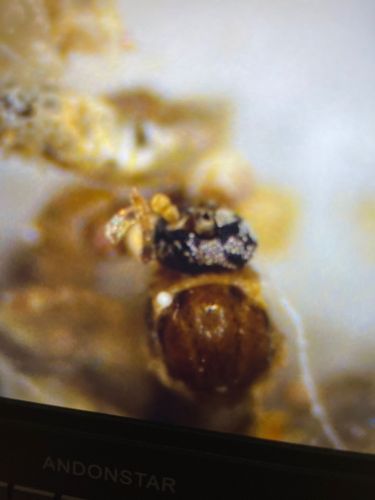Spider Mite
Scientific Name: Tetranychus urticae (Two-spotted spider mite) or a related species within Tetranychidae
Order & Family: Order Acari, Family Tetranychidae
Size: Typically very small, ranging from 0.4 to 1.0 mm (0.016 to 0.04 inches) in length.

Natural Habitat
Spider mites are found worldwide in various vegetated environments, including gardens, farms, greenhouses, and homes where houseplants are present. They thrive in warm and dry conditions and are often associated with the underside of plant leaves.
Diet & Feeding
Spider mites are herbivores, feeding on the sap of plants. They use their piercing-sucking mouthparts to extract cell contents from leaves, stems, and fruits. They can feed on a wide variety of plants, including agricultural crops, ornamental plants, and houseplants.
Behavior Patterns
Spider mites are known for their ability to spin fine silken webs, particularly when populations are high. They reproduce rapidly, especially in warm, dry conditions, and can quickly infest plants. They are often found on the undersides of leaves. Overwintering eggs or adults may hide in cracks and crevices.
Risks & Benefits
Risks: Spider mites are significant agricultural and horticultural pests. Heavy infestations can cause extensive damage to plants, leading to leaf discoloration (stippling, bronzing), wilting, defoliation, and reduced crop yields. They can be very difficult to control due to their rapid reproduction and resistance development to pesticides. Benefits: In certain ecosystems, they can serve as a food source for predatory mites and insects, playing a role in the food web, though their destructive impact on cultivated plants generally outweighs any ecological benefits from a human perspective.
Identified on: 9/4/2025